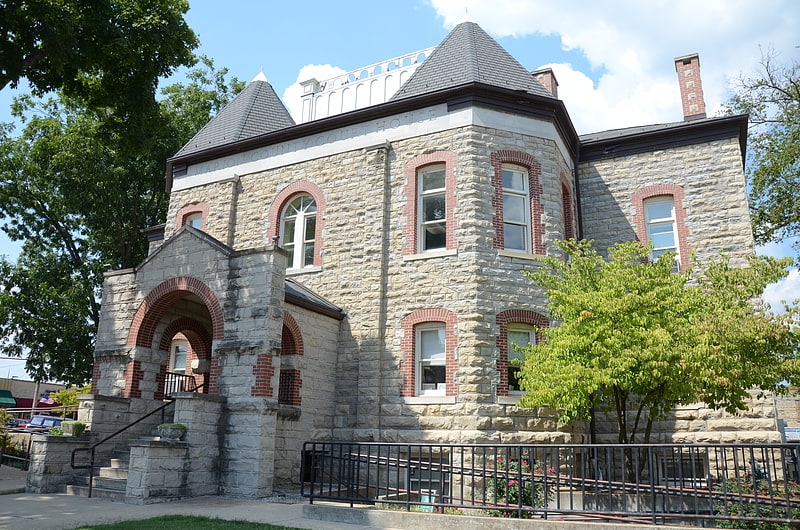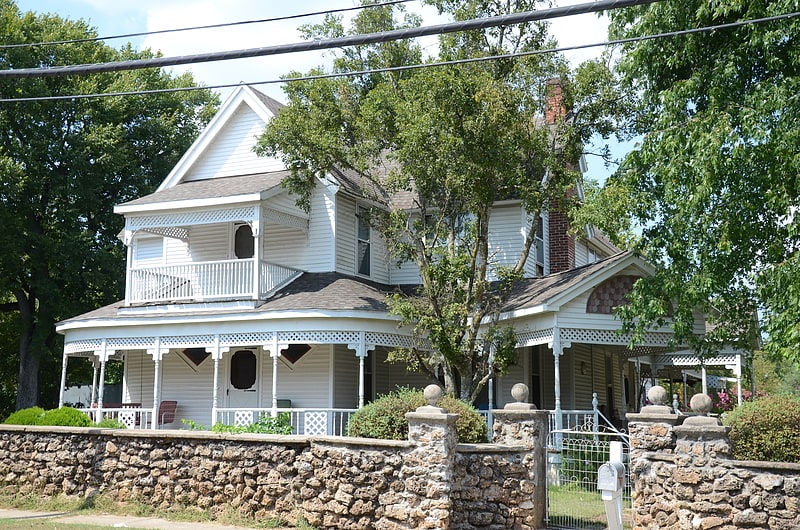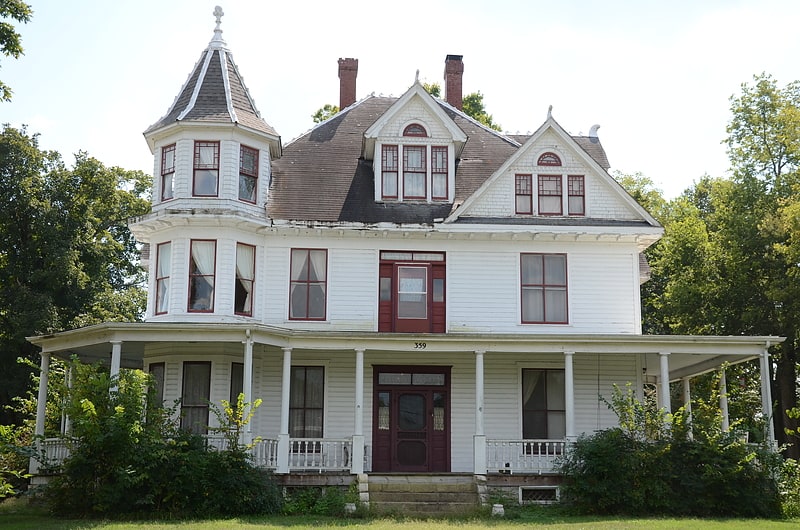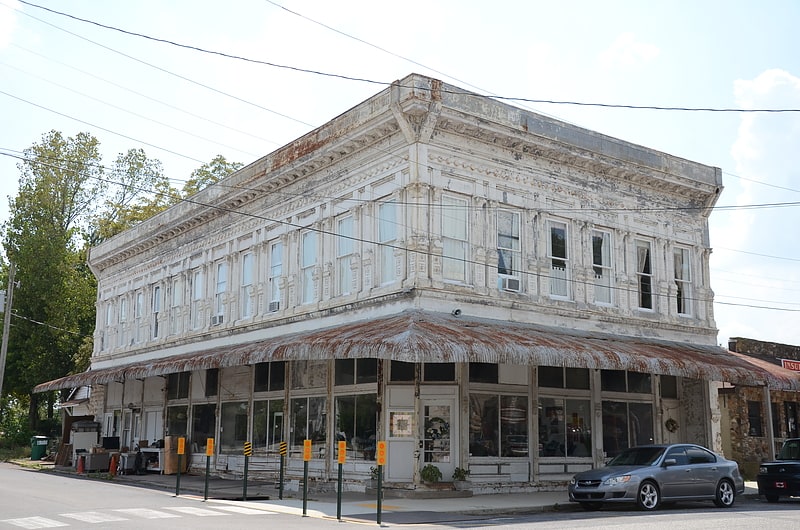Discover 5 hidden attractions, cool sights, and unusual things to do in Yellville (United States). Don't miss out on these must-see attractions: Marion County Courthouse, Carter–Jones House, and Cowdrey House. Also, be sure to include Layton Building in your itinerary.
Below, you can find the list of the most amazing places you should visit in Yellville (Arkansas).
Table of Contents
Marion County Courthouse

Courthouse. The Marion County Courthouse is located at Courthouse Square in Yellville, the county seat of Marion County, Arkansas. It is a two-story stone and concrete structure, set on a raised basement. Its main elevation has a series of projecting sections, with the main rectangular block of the building behind. The first section is a Romanesque round-arched entry, flanked by square supports and topped by a small gable. This leads through a slightly smaller gable-roofed section to a wider section, which has prominent hexagonal turrets at either side, a surviving remnant of the previous courthouse. Most of the structure is finished in rusticated stone; there is a course of concrete at the cornice below the turrets, in which the "Marion County Courthouse" is incised. The building was constructed in 1943–44, after the 1906 courthouse was heavily damaged by fire. The previous courthouse was designed by George E. McDonald.
The courthouse was listed on the National Register of Historic Places in 1994.[1]
Carter–Jones House

The Carter–Jones House is a historic house locatedt in Yellville, Arkansas.[2]
Cowdrey House

The Cowdrey House is a historic house at 1 Valley Street in Yellville, Arkansas. It is a 2+1⁄2-story wood-frame structure, with asymmetrical massing and a pyramidally-roofed turret typical of the Queen Anne style. Built in 1904, the house is particularly notable for its interior woodwork, which was made in Memphis, Tennessee and transported to Yellville for installation. It was built by J. S. Cowdrey, whose family were early settlers of the area and were involved in many local businesses. The Cowdreys hosted future President of the United States Herbert Hoover in 1927.
The house was listed on the National Register of Historic Places in 1978.[3]
Layton Building

The Layton Building is a historic commercial building at 1110 Mill Street in downtown Yellville, Arkansas. Built in 1906, this rusticated stone two-story building is one of the largest in Marion County. It has five irregularly-sized bays on the first floor and six on the second. The entrances to the storefronts are set inward at a 45 degree angle. There are decorative metal cornices between the floors and at the roof line. The building's original commercial tenants were the Bank of Yellville and the Layton Department Store; the bank's vault is still in the building.
The building was listed on the National Register of Historic Places in 1978.[4]
J.C. Berry's Dry Goods Store

Store in Yellville, Arkansas. J.C. Berry's Dry Goods Store is a historic commercial building at 331 Old South Main Street in Yellville, Arkansas. It is a two-story block, built out of local limestone with pressed metal trim. The ground floor has a glass commercial store front, sheltered by a porch, and the second story has a bank of six windows, each flanked by a pair of Ionic pilasters. The roof has an extended overhang supported by brackets, and a highly decorated parapet. The metal elements of the facade were manufactured by the Mesker Brothers, a nationally known producer of metal architectural goods based in St. Louis, Missouri. The building was built in 1903 by J.C. Berry, and was operated as a dry goods business until 1912, when Berry's nephew Rex Floyd converted it for use as a hotel after his Park Hotel burned down. The hotel closed in 1952, and the building has seen a succession of mixed commercial and residential uses.
The building was listed on the National Register of Historic Places in 2003.[5]